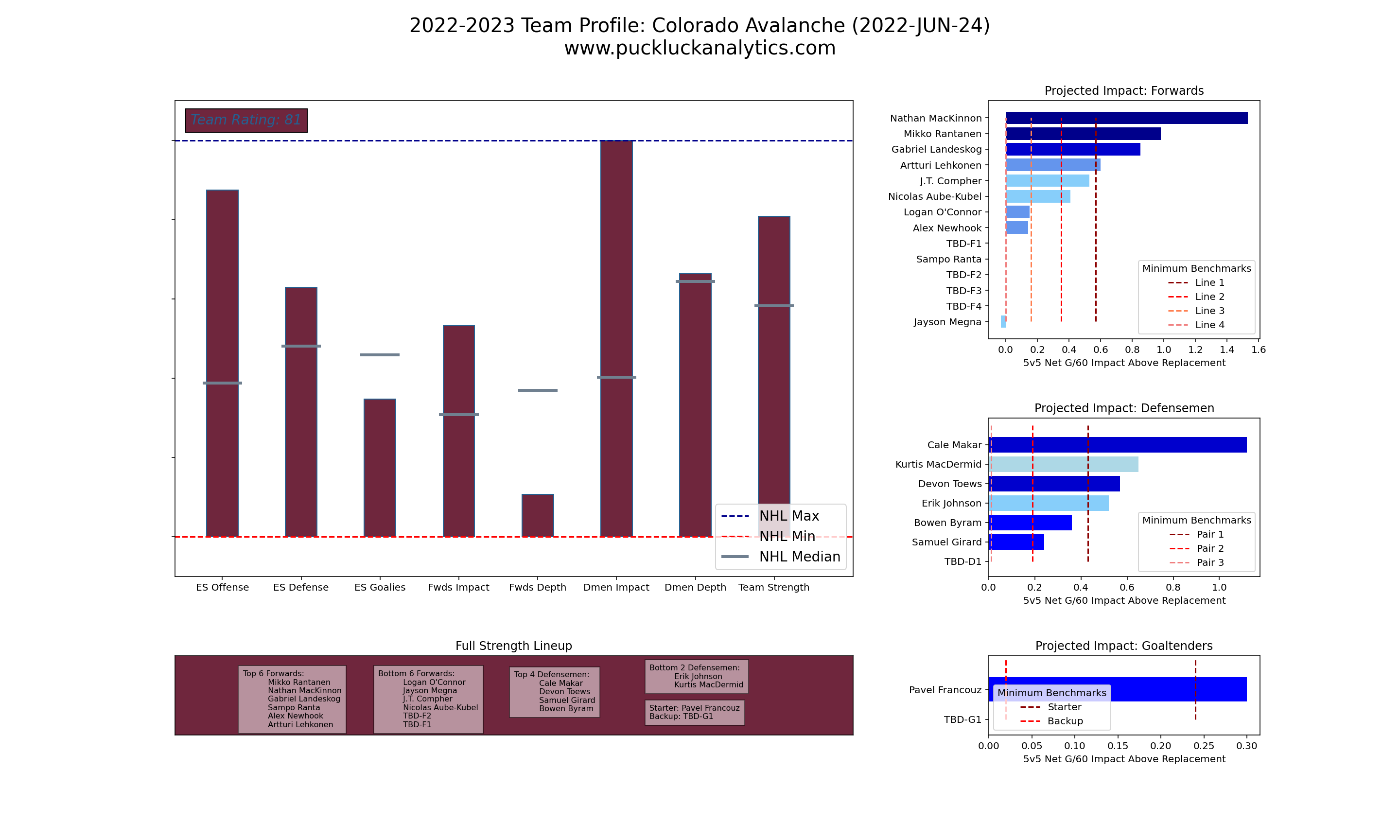The Colorado Avalanche were the class of the Central Division in 2021-2022 and are one win away from hoisting the Stanley Cup. Which teams might challenge for supremacy in the Central in 2022-2023? Which teams are in the best position to improve their rosters over the summer as the offseason gets underway?
For the analysis below, we’ll make a few key assumptions. First, we’ll assume that all RFAs will return to their current clubs. Their impact is included in the team projections, however no cap hit is included in the team totals. Obviously, some of each team’s cap space will be required to resign their RFAs so we’ll make note of potential cap headaches where applicable. Second, all UFAs are removed from the rosters. Any resulting holes in the roster have been filled with replacement level players.
Central Division Projected Standings
With rosters adjusted as described above, the Avalanche are in a dead heat with the Minnesota wild in next seasons projected standings and the Nashville Predators aren’t far behind. Three more teams look like they are within striking distance of the top teams, while the Chicago Blackhawks and Arizona Coyotes are far behind.
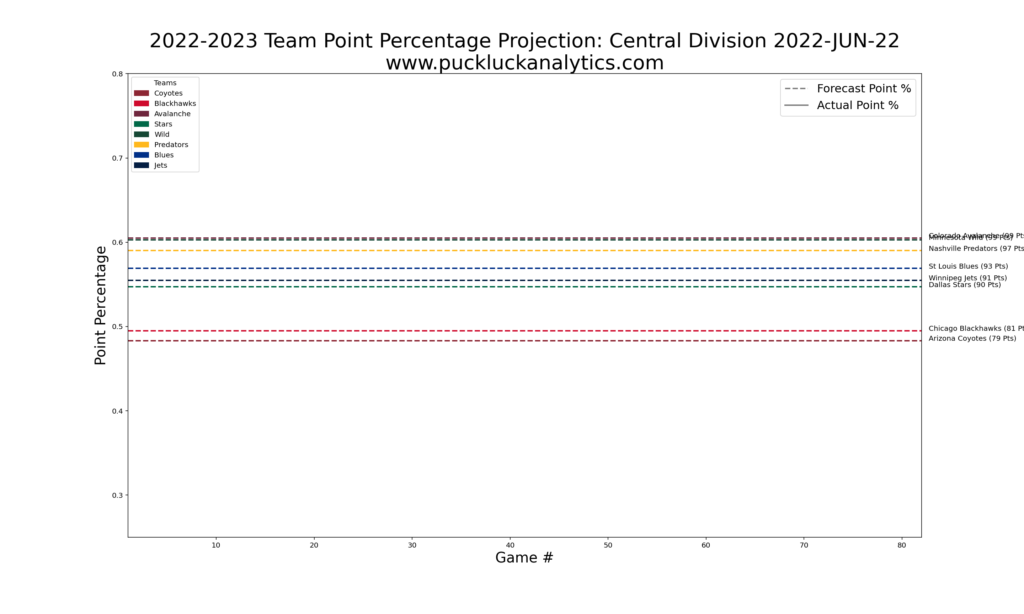
Obviously, the are plenty of decisions to be made by each team over the summer and offseason moves will change this outlook. Each team has a unique set of roster construction and cap space considerations as the offseason gets underway. How might the landscape change over the offseason? Let’s take a look at each team’s situation, in order of the current projected standings, to see which teams have the most potential to improve over the offseason.
Colorado Avalanche
Nazem Kadri, Valeri Nichushkin, and Andre Burakovsky are among the UFAs removed from the Avalanche roster, yet they still have a narrow lead in the projections for next season. Their defense core remains mostly under contract and is the best rated in the league. The offseason focus will be finding some cap efficient deals to fill the holes in the forward group and a goaltender.
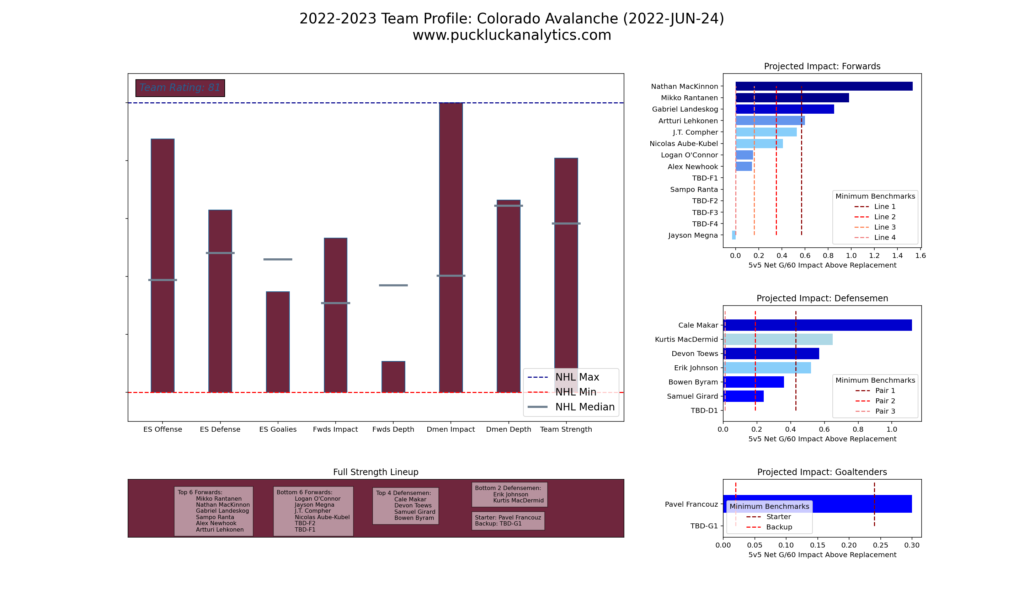
The Avalanche have under $60M committed to 15 players for next season, giving them excellent flexibility to bolster their roster this offseason. They have plenty of cap space to re-sign RFA Artturi Lehkonen, as well as extend or replace their key UFAs.
The Avalanche may lose a couple of players who had big seasons for them in 21/22 but they have the cap space to plug the holes with quality players. Expect the Avalanche to look even better by opening night.
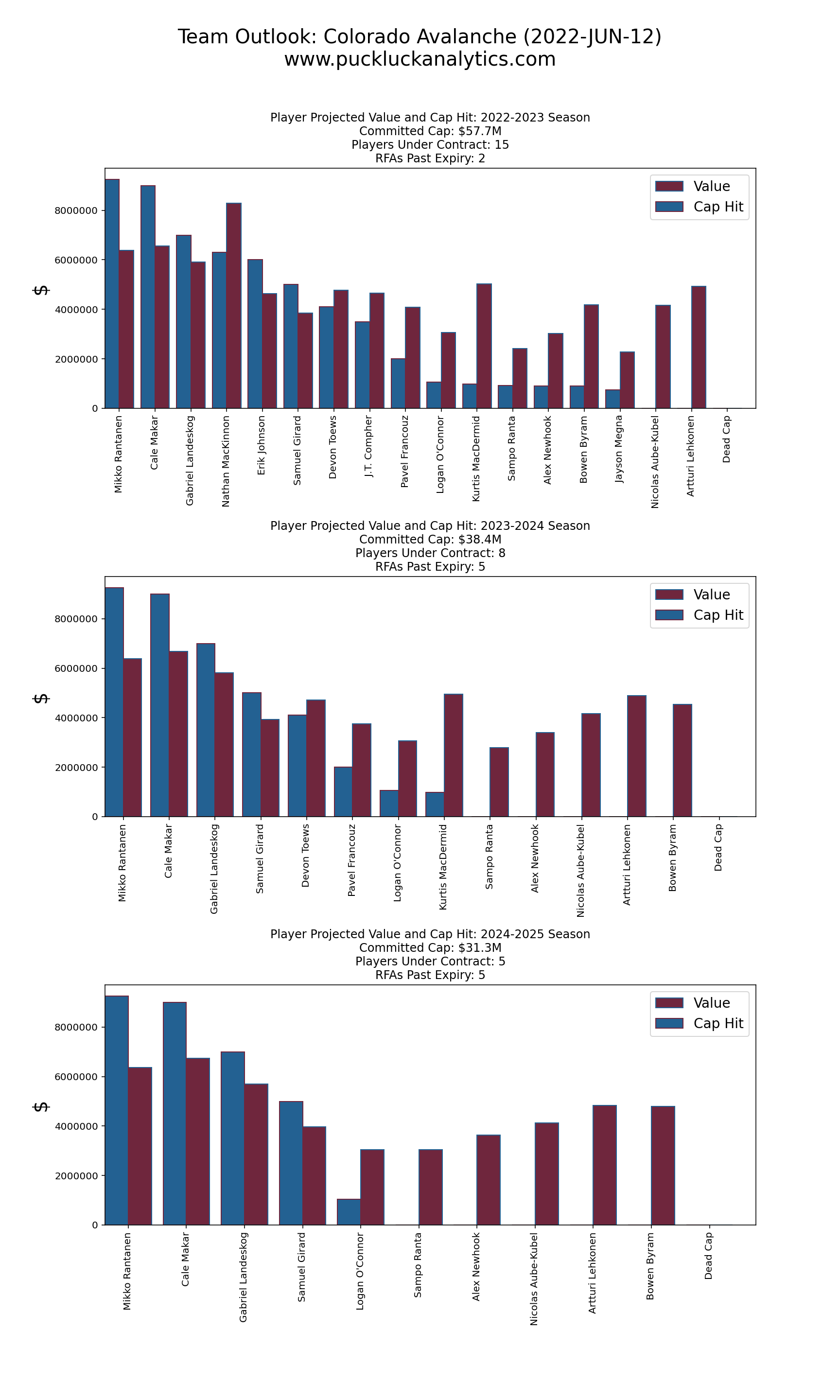
Minnesota Wild
The Minnesota wild are neck and neck with the Avalanche in the early projections for next season. They are generally strong throughout the lineup, with most of the team under contract for 22/23. The roster profile shows a weakness in goal, although that’s mainly due to an open roster position.
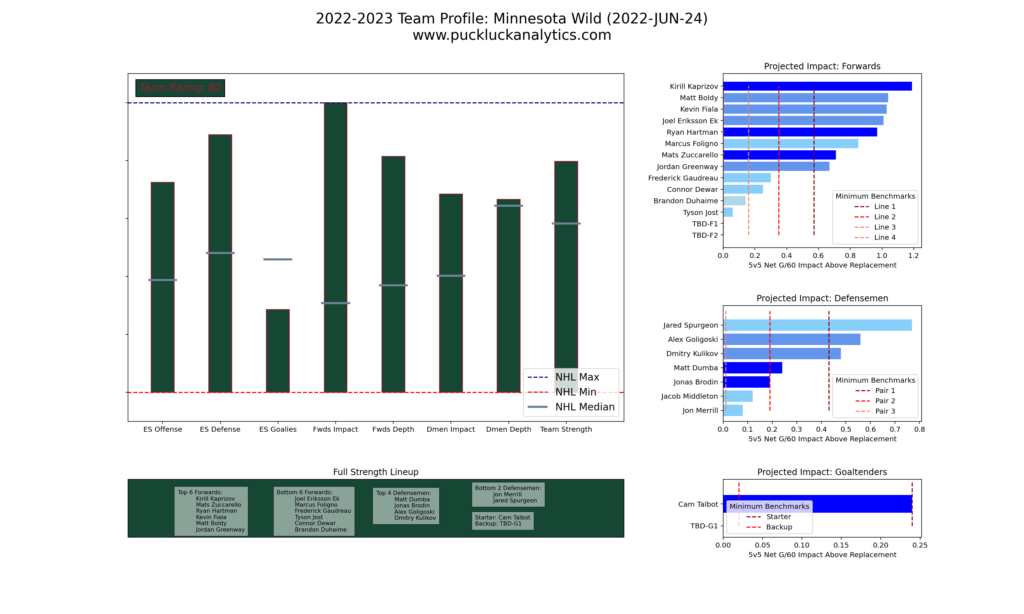
While their roster strength is similar to the Avalanche, the Wild are in a much different spot with the salary cap. They have only about $7M in available cap space for next season as the Ryan Suter and Zach Parise buyouts hit hard. They’ll have to sign 4-5 players to fill out their roster, including RFA Kevin Fiala. Fiala will likely command most, if not all, of the Wild’s remaining cap space. It looks inevitable that the Wild either move Fiala or another player(s) to make the cap work for next season.
With dead cap being the Wild’s largest cap hit next season, they will be in tough to improve their roster over the offseason. A good summer likely sees the roster maintain it’s current projected strength.
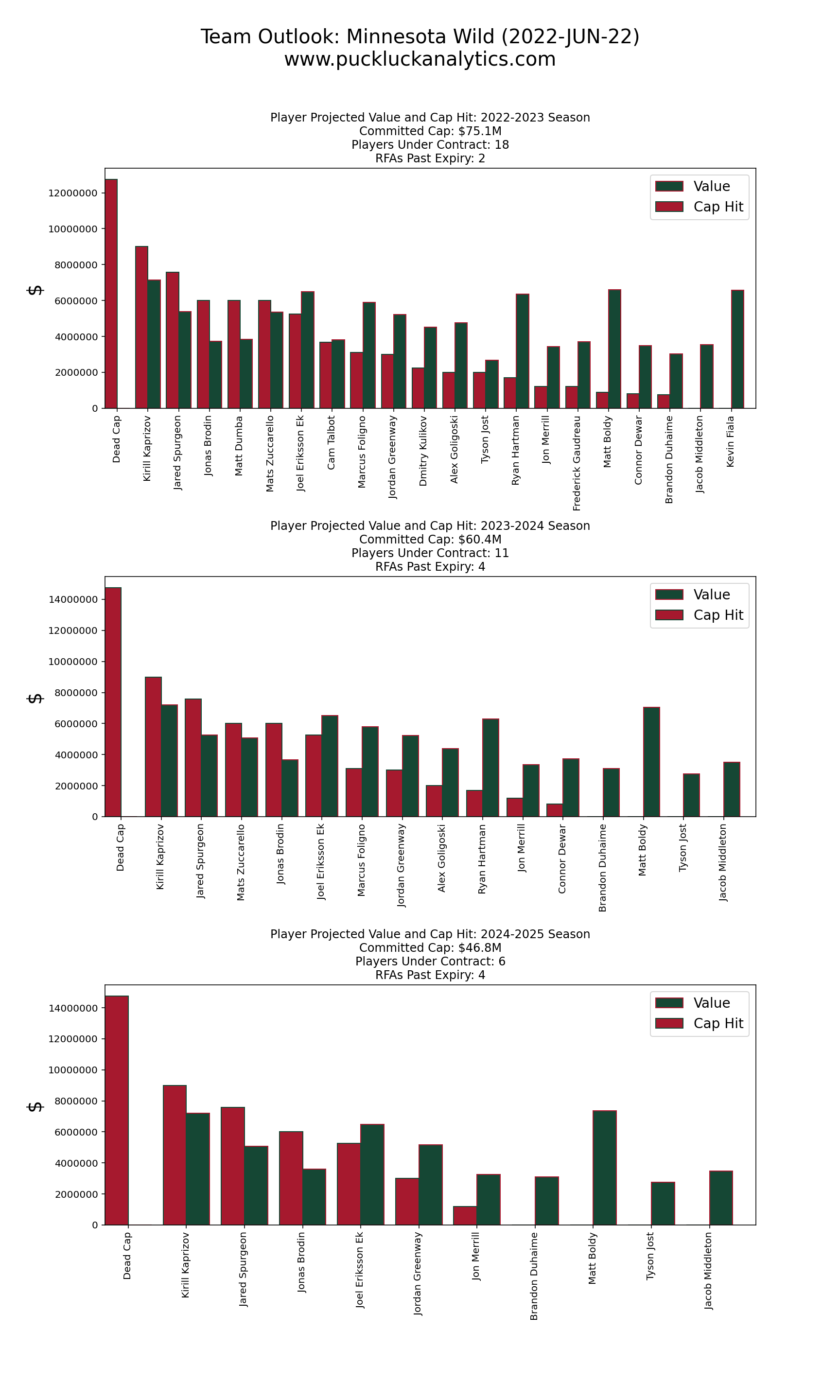
Nashville Predators
The Predators look like a team that could make a push for the playoffs again next season, with the third best projection in the Central before the offseason gets into full swing. Roman Josi leads a strong defense core and they have one of the top goalies in the NHL in Juuse Saros. The impact of their forwards is the glaring weakness that needs to be addressed. With Filip Forsberg a UFA, the Preds don’t have a forward that is projected to have a top line impact next season.

The Predators have about $25M in cap space available to fill out their roster and need to sign 6-7 players to do so. Luke Kunin and Yakov Trenin are RFAs, which leaves some cap space available to chase free agent additions and improve their forward core. Whether they’re able to bring Forsberg back into the fold or they look elsewhere, they have the means to improve.
With a good offseason, the Predators look like a team that could improve before the puck drops on the 22/23 season. They probably can’t catch the Avalanche, but they are positioned well to move past the Wild as the summer goes on.
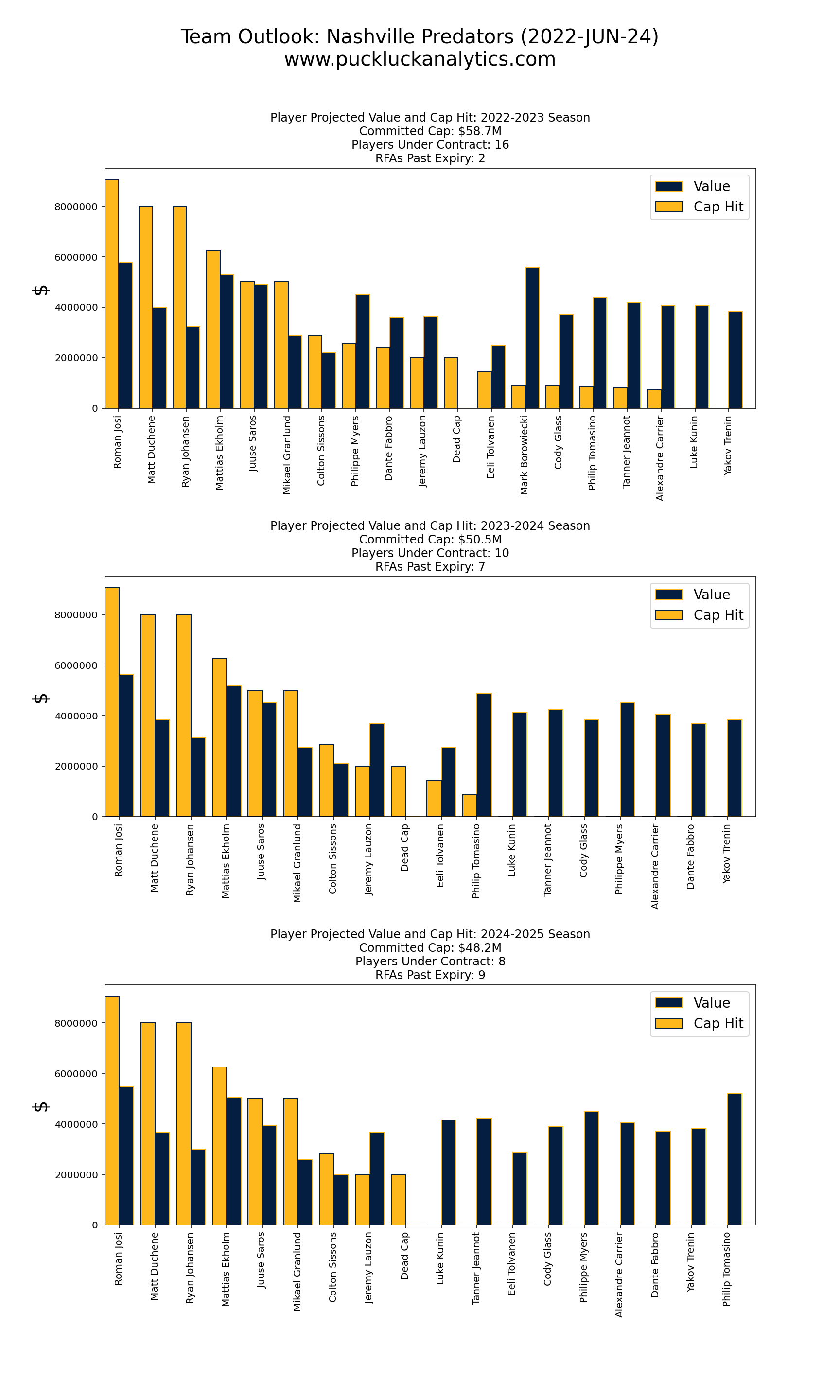
St Louis Blues
The Blues are ranked just above average with their team strength, but their roster profile shows some areas that need improvement. Their overall impact from defensemen is very low, along with their forward depth showing a steep drop off after their top few forwards. Their even strength offense is much better than defense and it should be a consideration as the Blues fill out their 22/23 roster.
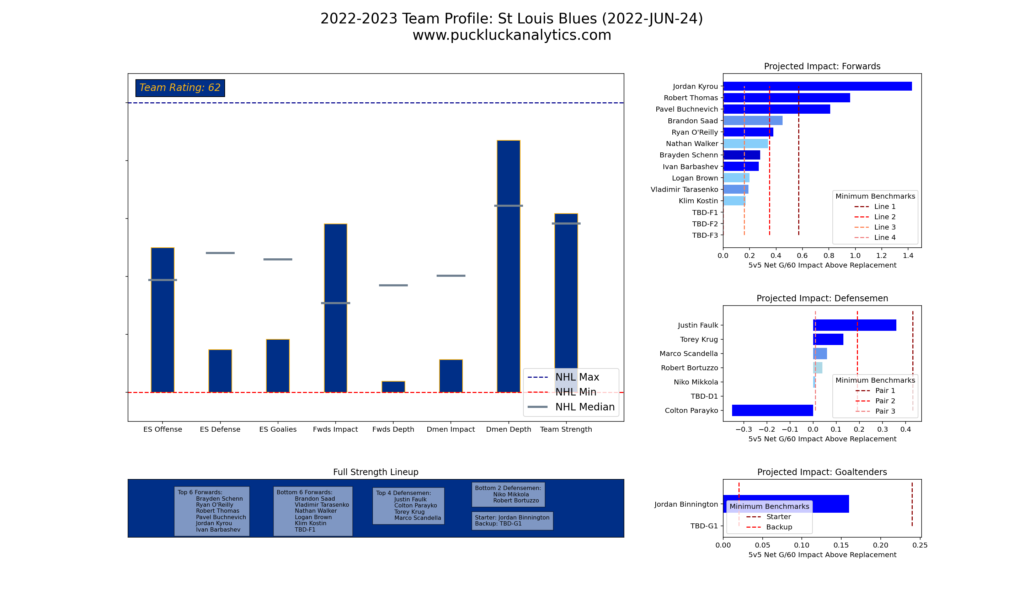
With a little over $10M to fill out the roster, the Blues will have to work efficiently to sign 6 or 7 additional players. They have a number of inefficient contracts bogging them down and moving one or two of them out could make improving the roster over the summer a much easier task. There are plenty of options to consider if they do want to move out contracts, with multiple skaters at forward and defense fitting the profile.
If the Blues choose to run it back and simply use their available cap space to fill out the roster, they’ll have a very difficult time improving much over the summer. If they are able to move an inefficient contract or two, they could be in a much better spot and put themselves in the mix for the divisional playoff spots.
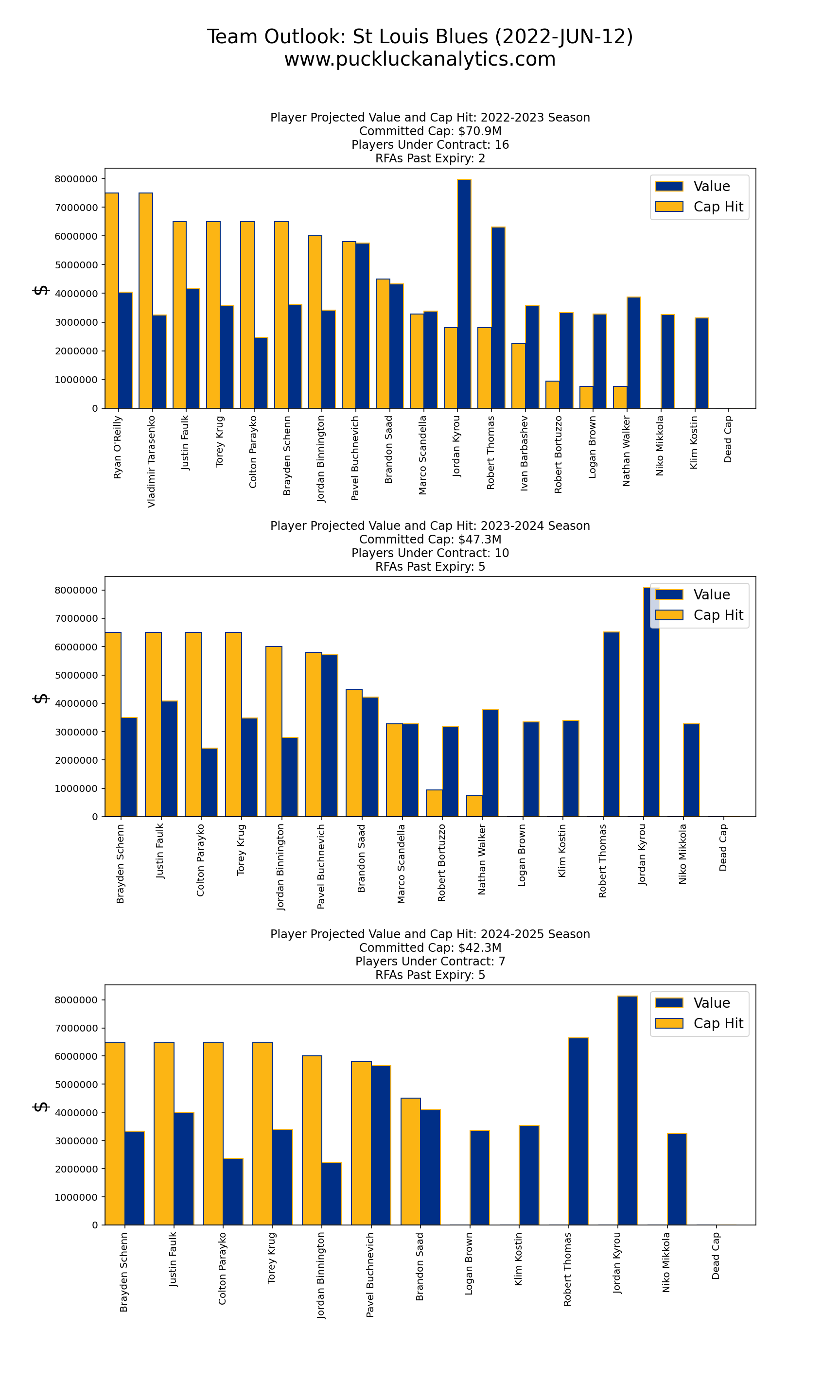
Winnipeg Jets
The Jets have been in a slow decline over the past few years and their roster profile suggests that more of the same may be in store next season. They rank below average everywhere except their forward depth and will need some widespread improvements to challenge for the playoffs next season.
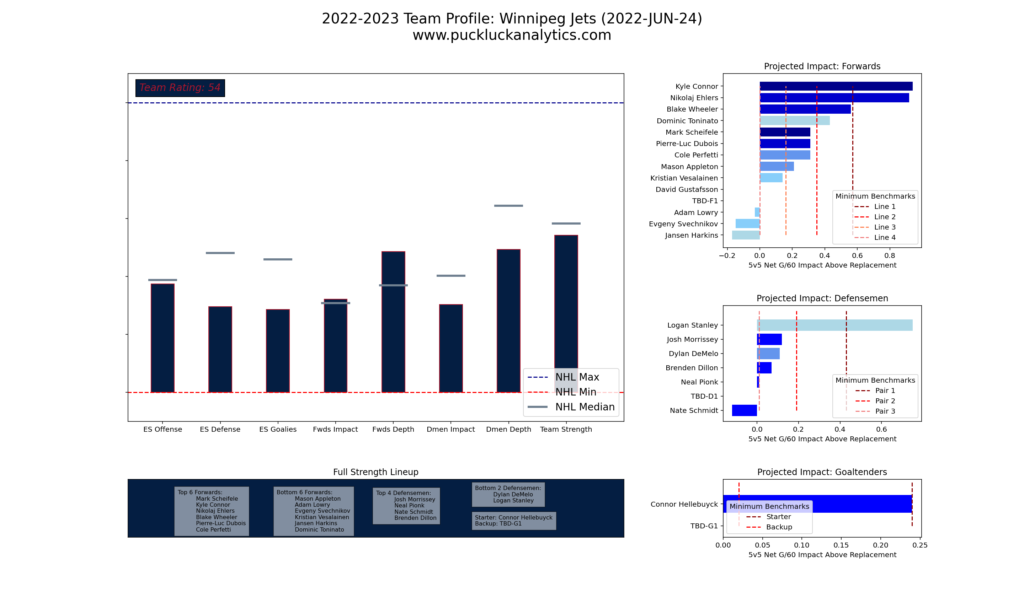
The Jets have only 14 players under contract and a significant amount of cap space as the offseason get set to ramp up. However, there are six RFAs included on the roster that need to be signed and their impact is already included in the roster profile. Pierre-Luc Dubois is the most notable, and he has indicated that he plans to test the UFA market when he is eligible in two years time. With trade rumors swirling around core players like Mark Scheifele and Blake Wheeler, change is in the air in Winnipeg.
The Jets have some flexibility with their cap situation this summer, although the high number of RFAs reduces that to some extent. If they are serious about moving some core players, the team could look much different by the fall.

Dallas Stars
The Stars are well established as defensively stout and offensively challenged in recent years. Their roster profile indicates we should expect more of the same next season. Their forwards impact is a big weak spot in the roster and addressing it by adding some offensively capable skaters would go a long way to improving the team.
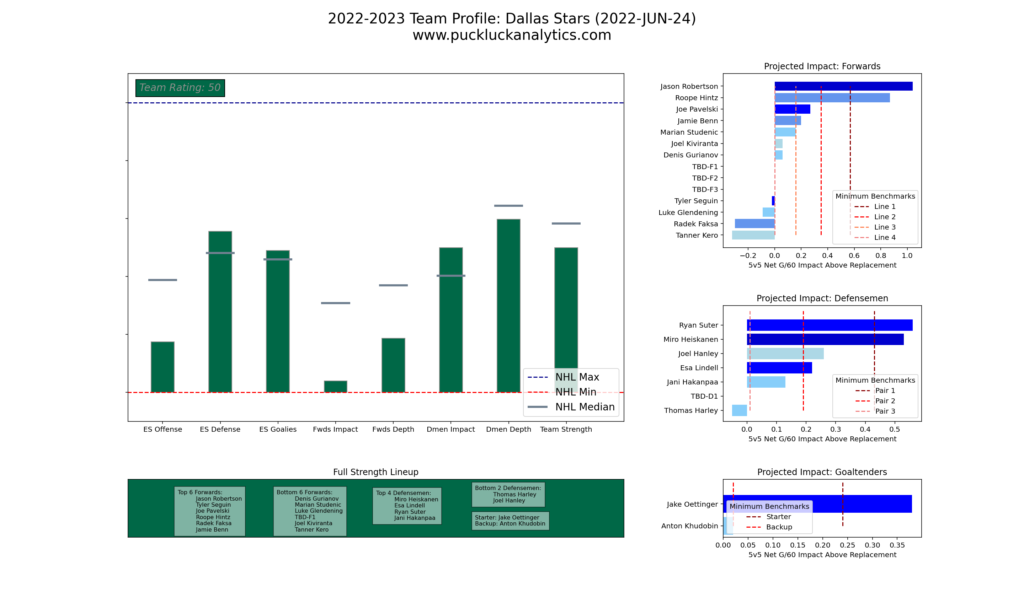
The Stars have over $20M in cap space for 6-7 contracts this summer. They have a couple of key RFAs that are likely to take a large chunk of that cap space, though. With Jake Oettinger and Jason Robertson both in need of new deals, the Stars cap situation is much tighter than it first appears.
Locking up their young stars is key for the Stars long term outlook but it will come at the cost of limiting their opportunity to improve this offseason. Offloading an inefficient contract could help, but the Stars look likely to be a team chasing the wild card spots next season.
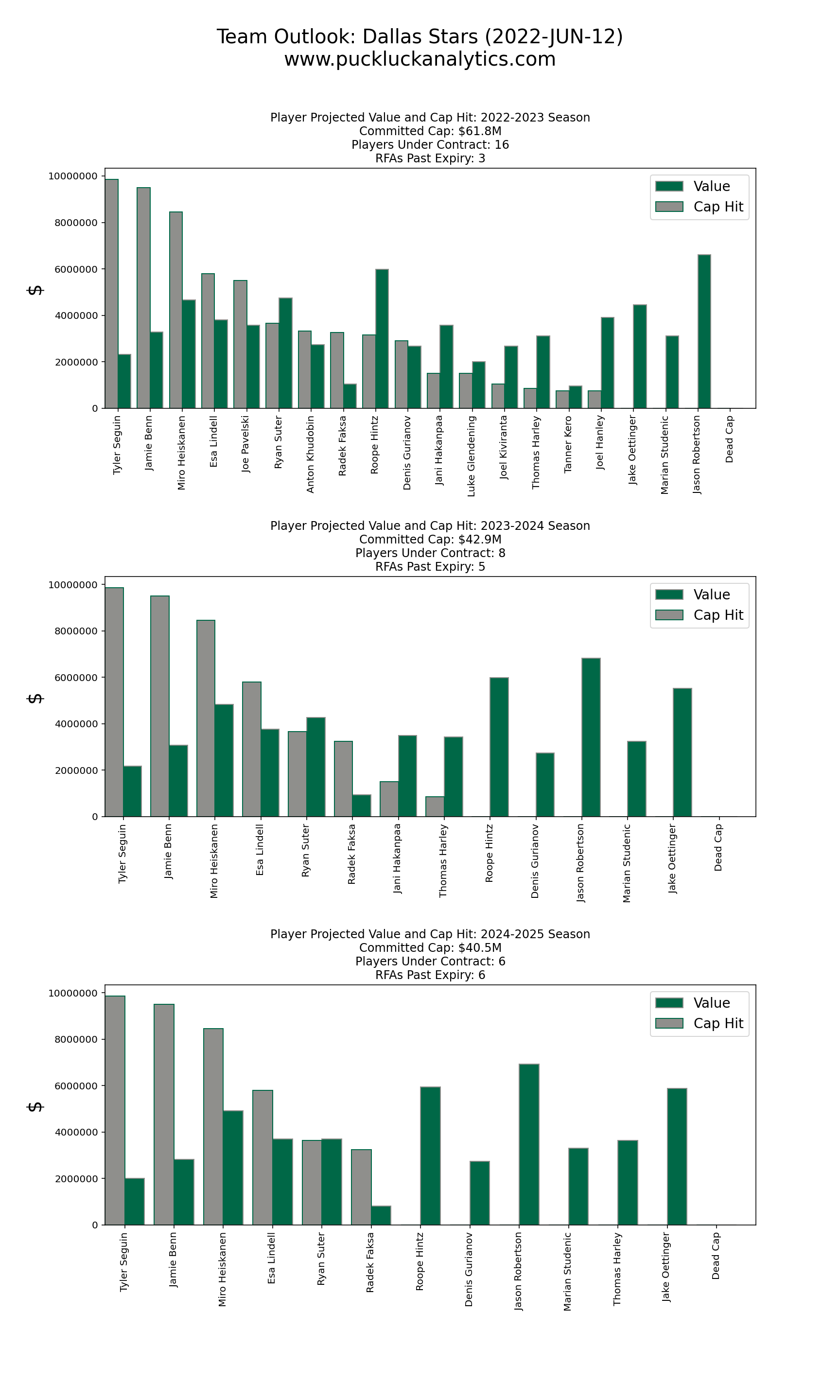
Chicago Blackhawks
The Chicago Blackhawks have indicated that nearly everyone is available. With rumors swirling around players like Alex DeBrincat, it seems as though the Blackhawks are headed for a rebuild. If that’s the case, their roster looks poised to enter the Connor Bedard sweepstakes.
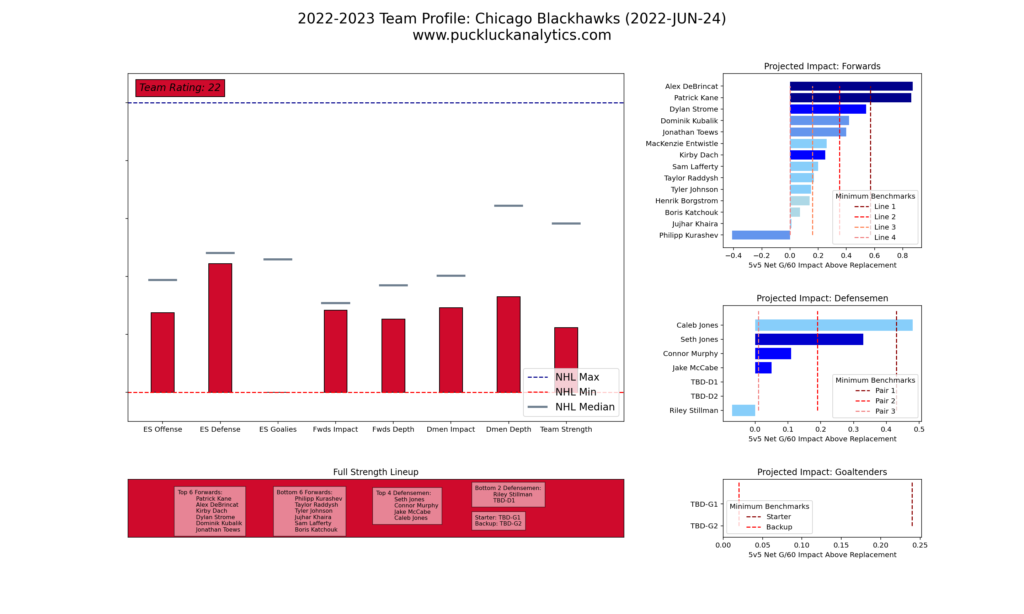
The Blackhawks have flexibility this offseason as they look to lock up a handful of RFAs and have $25M in cap space heading into the offseason. If they are indeed planning to tear it down, look for them to move out a few veterans freeing up more cap space and eroding the team strength.
If the Blackhawks goal is to be competitive next season, they have a massive task in front of them that looks unlikely to get them to the playoffs. It seems more likely that they take the rebuild route and try to capitalize on the strong draft class next summer.
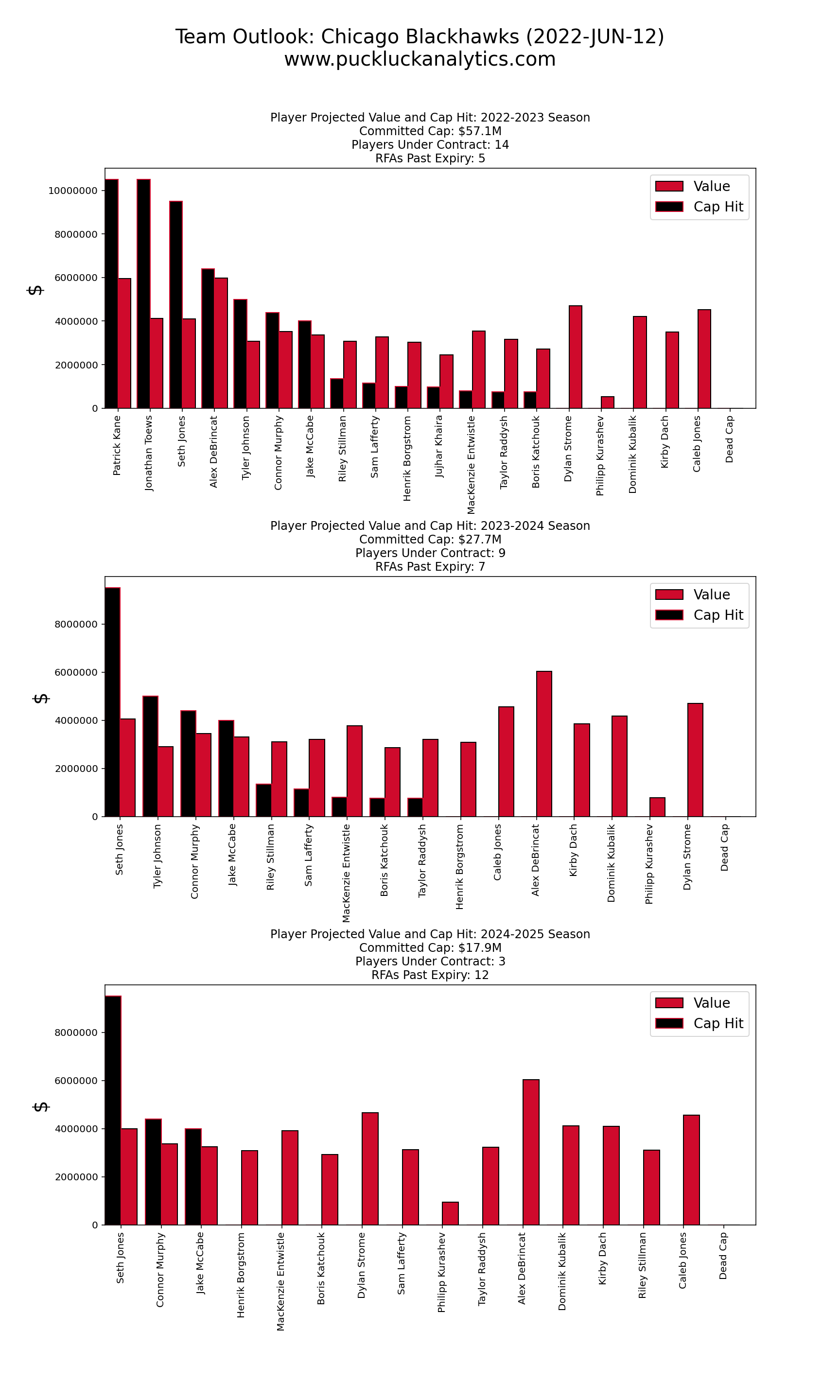
Arizona Coyotes
The Coyotes entered full teardown territory last year and have one of the weakest team profiles in the league as the 2022 offseason commences. Both their forward and defense depth look average, but it’s a mirage created by their weak overall impacts and lack of top end talent at both positions.
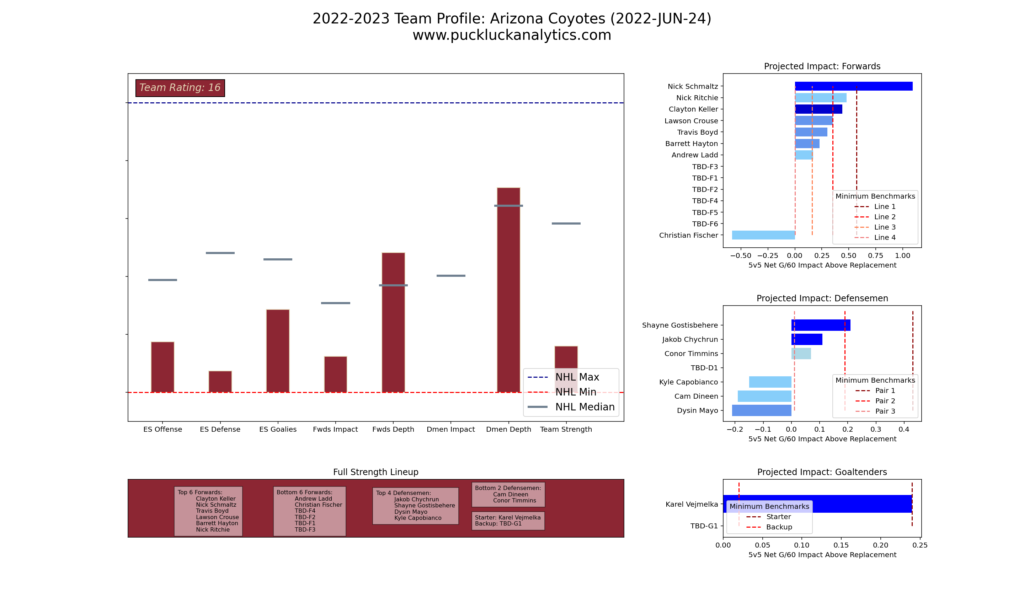
The Coyotes have a ton of cap space and open roster positions created by their 2021 offseason of taking on ‘bad’ expiring contracts. They have fully committed to a complete teardown. With a strong draft class expected in 2023, it seems like the best course of action would be to keep at it for one more season.
The Coyotes have the flexibility to start pulling out of their rebuild but the timing doesn’t look ideal. With next summer’s strong draft class, continuing to help teams out of cap trouble in return for future assets could set the Coyotes up for the next decade.
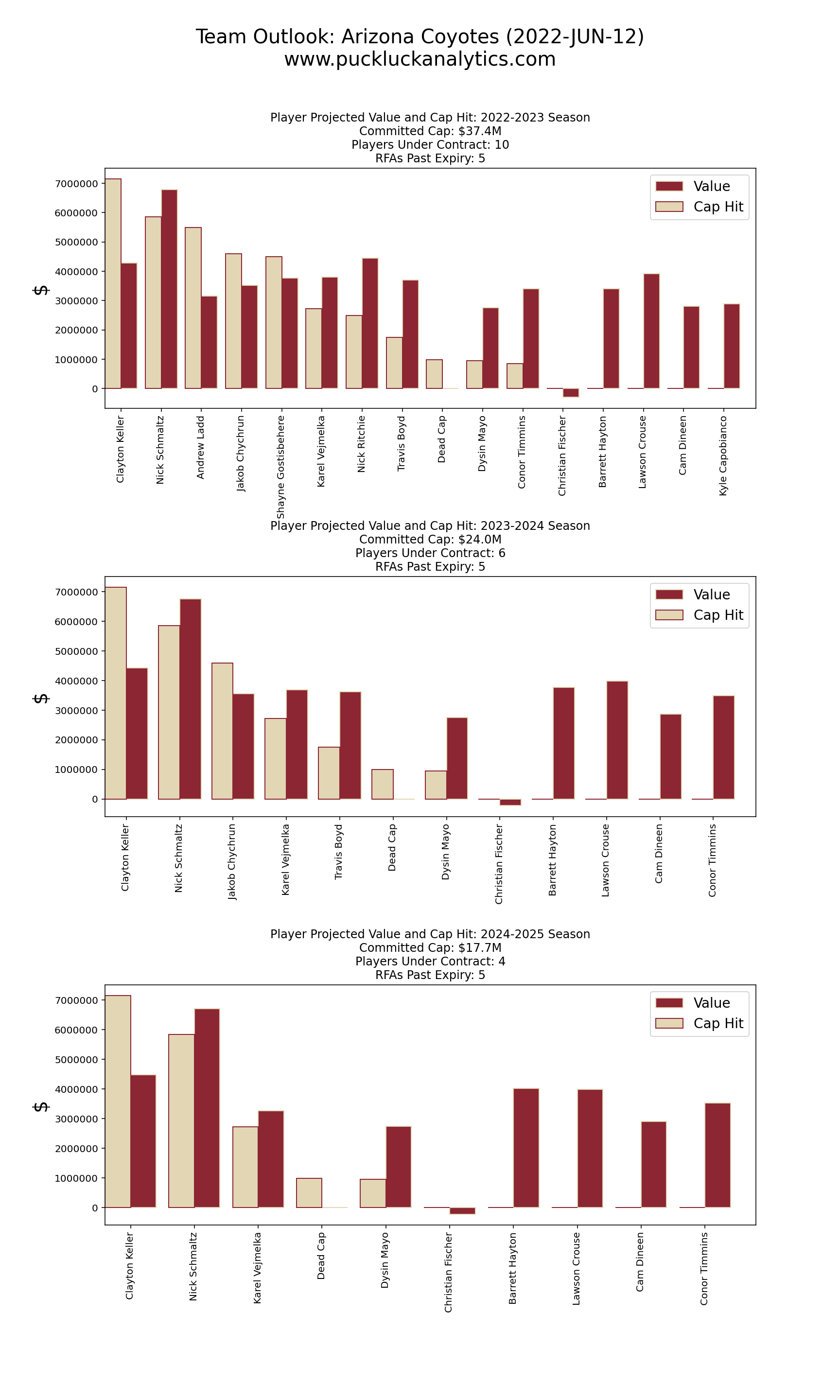
Want to peruse the player projections behind the team profiles or browse UFA player cards for the addition your favorite team needs? Sign up for an annual membership to get access to all 22/23 team and player projection cards. Plots will be updated through the offseason as the 22/23 rosters take shape and updated to track progress through the season so you can follow along with the changing landscape.
Input data for models from Natural Stat Trick. Contract data from CapFriendly.
